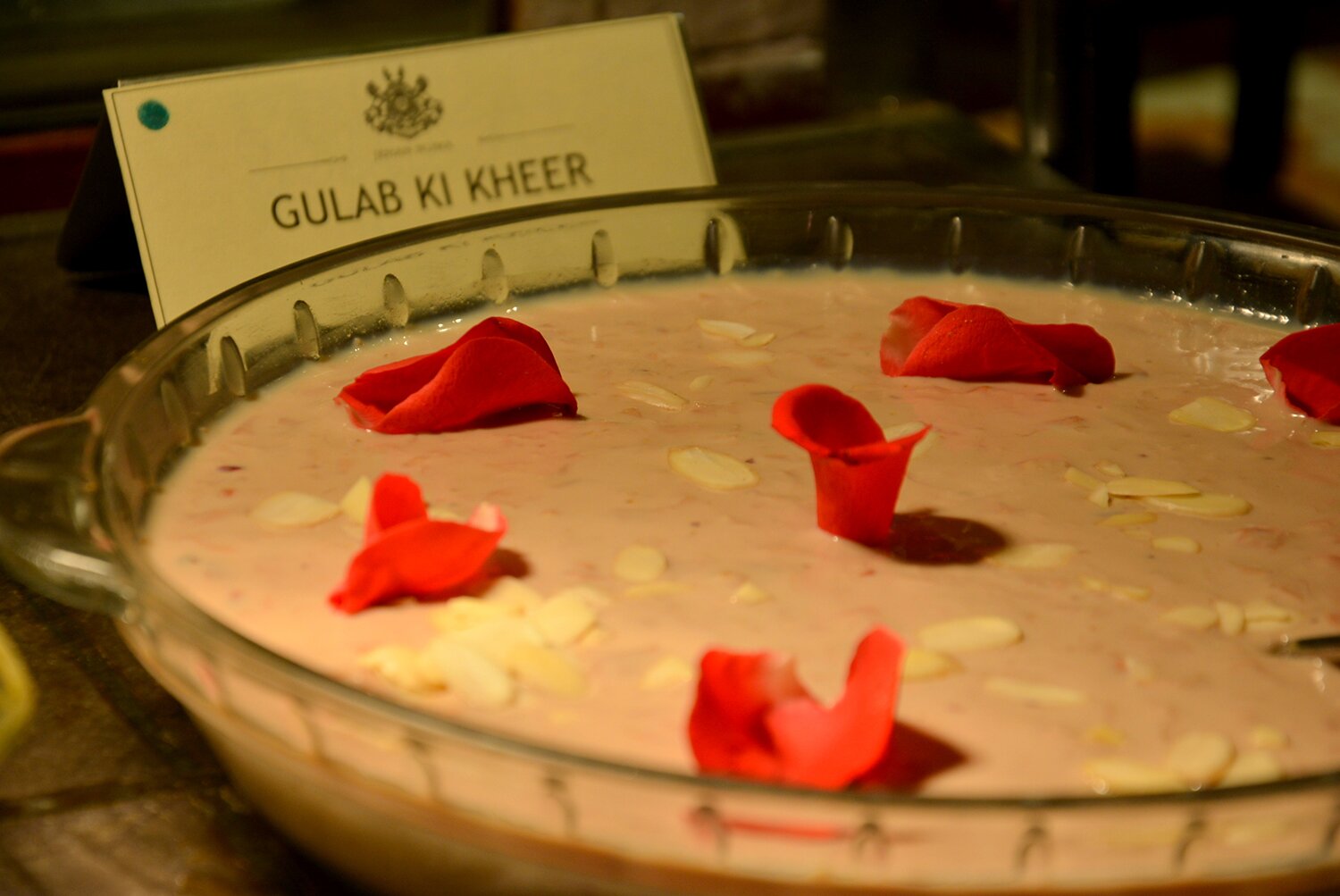~The Art and Science of Royal Cooking~
As the world is turning into a global village, our lifestyles are constantly changing. We have turned into experimenters who modify everything, be it clothing, vehicles and even our eating habits. But there are a few in a million who preserve their ancient culture and make it popular around the world!The princely estate of Sailana in Madhya Pradesh has a hundred year old history over the love for food and is known for its royal cuisine. With the idea of sharing the royal food with the people of the state, His Highness Maharaja Vikram Singhji had come all the way to Bhopal for the four day Sailana Food Festival at Hotel Jehanuma Palace (Shahnama). His son, Maharaja Divyaraj Singh is also a foodie and is carrying forward the ancient culinary art.

Maharaja Vikram Singh is a gastronome and owes his skills to his grandfather Raja Dilip Singhji and to his father Raja Digvijay Singhji who were experts in the culinary art. During the British rule, his grandfather used to travel to the neighboring countries and even to states like Hyderabad, Kashmir to collect recipes of the Mughals and Rajputs and went on to experiment them in his own estate. Later, Raja Digvijay Singhji followed the legacy and came up with a cook book ‘Cooking Delights of the Maharajas’ that contains over 150 authentic recipes from the Sailana kitchen. This cook book is one of the oldest pieces of culinary art and is still followed by the foodies in India.
Surprisingly, this legacy was supposed to run only in males of the Sailana family because Raja Dilip Singhji felt that if females get to know the secret recipes, they will pass it on to their in-laws and the legitimacy of Sailana’s royal food will be at stake. But later he realized that if the recipes stay a secret, the ancient cuisine might die once the lineage comes to an end and therefore, he started making this art known to many other gourmets who had a similar passion. Maharaja Divyaraj Singh, the youngest son of the family is giving a new dimension to this legacy by acquiring a professional degree in culinary arts from Pune.
For Maharaja Vikram Singhji, cooking is like meditation and needs to be done with expertise, concentration and experience. He shared that at Sailana, the food is cooked with passion and hard work. Everything is weighed and added with precision; balance of flavors is maintained to come up with the best taste that can be relished forever. There is a team of khaansamas who are specialized in grinding spices, chopping vegetables. The royal food is still cooked in the ancient utensils that were scientifically designed by Raja Dilip Singhji who believed that cooking is a blend of both art and science.

Maharaja Vikram Singhji shared an incident from one of his food festivals at Hyderabad where he organized a workshop for fifteen chefs at a hotel. During the workshop, he placed a common recipe on all the fifteen tables and asked those chefs to cook as instructed. While he tasted the food, he was astonished to know that all the fifteen chefs who were asked to make the same dish have given different taste to it. It made him realize that although cooking can be learned and mastered, it also comes as a gift of God and there is magic in few hands and it is the magic of taste!
Talking about the royal food, the most popular main course dishes include Dal Sailana, Junglee Maas and Korma Khada Masale Ka that are being served at many heritage hotels across India. The Sailana Food Festival is serving vegetarian dishes like Makke Ke Daane, Baigan Dahi Shiraz and Dal Sailana and non-vegetarian dishes like Sabut Bater, Machli Aab e Hayaat, Malai Biryani, Machli Ka Khageena, Mutton Ke Soole and Junglee Maas. These dishes are made rich and heavy by adding lots of ghee, dry fruits and spices that give an authentic flavor and aroma to the food. Startlingly, none of these dishes contain tomatoes because during the reign of Maharaja Dilip Singhji, tomatoes did not exist in India and later when they were exported from America and Spain, Indians were afraid to eat them.

Sailana is famous for its sweet delights like Gulaab ki Kheer, Makke Ka Halwa, Makke Ki Phirni and Nimmish. Gulaab Ki Kheer is Maharajas’s personal favorite and was served at the Sailana Food Festival.
Sailana also has a history of wine making in India. Earlier, the Maharajas owned the distilleries that produced wine using Mahua in different flavors like Narangi, Paan and Rose. But now, the liquor license has been taken away so wine is not produced commercially.
Maharaja Vikram Singhji is against the idea of fusion cooking and believes that when we already have such unique recipes in our country, we don’t need to make food complicated. He is currently writing a cook book that will contain recipes of his latest inventions and innovations in royal cuisine. He dreams of projecting Sailana as a place where people from all over the world can come, stay and learn the ancient culinary art because it is one of a kind. As his grandfather loved to cook in an open space with people around him; he feels that the history shall repeat.
For Maharaja Divyaraj, this was the first food festival and he was really excited to cook Biryani for the Bhopalis. Maharaj Vikram Singhji has been travelling places but his cooking experience at Bhopal has been splendid and he was amazed by the overwhelming response for his royal cuisine. He added that since Bhopal has a Mughal origin, the people here have a great sense for royal food and thus, it is one of the best cities to organize such food festivals!

Nikita Kothari
For mptravelogue.com






